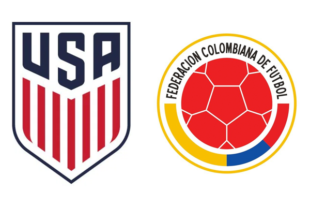Note: PSP’s Peter Andrews will be in the press box at Levi’s Stadium in Santa Clara for Friday’s game. Follow PSP’s Twitter account for live updates from the game.
The US begins play in the Copa America Centenario on Friday. Facing Colombia will be a tough test, but the US needs to get off to a good start to ensure their advancement from group play.
Everything old is new again
After the last few games saw the US line up in a 4-3-3 rather than the diamond 4-4-2 that has marked much of the last few years for the US, there has been much talk of Jurgen Klinsmann’s move to a “new system.” But the thing is, this isn’t anything new at all—not for Klinsmann and not for the US. When Klinsmann first appeared as US coach, he brought with him the idea that all of US soccer, at every level, would be playing the 4-3-3. Here’s an article discussing it, from 2011. The problem, in the end, was Klinsmann decided he didn’t have the players for the system. We could sit here and argue all day long about whether or not he was actually right about that, but the fact remains he went away from the 4-3-3, and this is the first time in a long time that we’re seeing it.
Klinsmann now downplays the importance of the formation, per se, saying,
There is no end formation that we are going for because, as we often talk about, the modern era of soccer is a fluid type of game where everybody defends and everybody joins the attack. No matter what formation or shape you prefer, it kind of leads to the same goals. No matter what system you want to choose. With a 4-3-3, and based on the players that we have, this is definitely interesting to see because we have now wingers that we maybe a couple of years ago didn’t have.
So, now we have the players, it seems, to use this flexible system that half the world’s teams uses as their default. Oh, good.
But seriously, the team has looked unleashed with Michael Bradley at the base of the midfield, and in-form players like Bobby Wood and Gyasi Zardes on the wings. Will it be enough against Colombia, or will Klinsmann want the extra protection of Kyle Beckerman versus Colombia’s talented No. 10, James Rodriguez?
Colombia
And that really is the question. Colombia would still be a dangerous team without Rodriguez—they have many players in their starting 11 plying their trade on big teams in big leagues—but with James, the Colombian team reaches another level. His play at the 2014 World Cup was on another level to anyone else’s, with apologies to eventual player of the tournament Lionel Messi. Since then, however, he hasn’t hit those same heights again, struggling to establish himself in the star-studded Real Madrid midfield.
But let’s not pretend he’s been a bust or something. He’s still capable of magic, and the key for the US will be containing him. If they do, whether it be Beckerman man-marking him, or Bradley prowling around, or some combination, the US stands a real chance to get something from this match. If they don’t, there’s not much hope.
Predictions
Klinsmann implied after Bolivia that Rodriguez was exactly the sort of player that the US needed a player like Beckerman to deal with, but that sounds like so much smoke. The US really has looked much invigorated by the switch in formation, and reverting to the 4-4-2 could stunt what positive momentum the US has built, and I think Klinsmann knows this. As such, expect to see the lineup as it appeared in the second half versus Bolivia: Brad Guzan; Fabian Johnson, John Brooks, Geoff Cameron, DeAndre Yedlin; Bradley, Jermaine Jones, Alejandro Bedoya; Wood, Clint Dempsey, Zardes.
I also believe the US will score. But enough to keep up with Colombia? Maybe. Maybe not. Until the US proves it can hang—that this team is really real, and not just flash versus underpowered friendly opponents—then I’m going pessimistic: USA 1–2 Colombia. Here’s to being proved wrong.


LET’S GO.